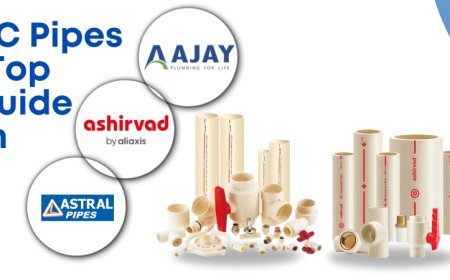Common Mistakes to Avoid in TikTok Shop Automation
The rise of TikTok Shop has brought a wave of opportunity for digital entrepreneurs, small business owners, and content creators alike.

The rise of TikTok Shop has brought a wave of opportunity for digital entrepreneurs, small business owners, and content creators alike. Its a space where products meet entertainment, where brands are built not only through marketing campaigns but through viral moments, community engagement, and creative storytelling. And while the potential for growth is undeniable, running a successful TikTok Shop isnt as effortless as it might seem especially when it comes to automation.
TikTok Shop automation promises to simplify operations, save time, and help businesses scale faster. When done right, it allows you to manage orders, update inventory, schedule content, and even handle customer service without constantly being tied to a screen. But automation is not a magic wand. Many sellers jump in without fully understanding the systems theyre using or the nuances of their own shop, leading to costly and frustrating mistakes.
If you're serious about building a sustainable and successful presence on TikTok Shop, it's essential to approach automation strategically. Lets explore the most common mistakes sellers make when automating their TikTok Shops and how to avoid them.
Automating Too Early Without Understanding Your Workflow
One of the most frequent mistakes new sellers make is trying to automate everything too quickly. Its easy to get excited about the promise of passive income and streamlined operations, but automation is only effective when it mirrors a workflow you already understand.
When sellers automate before they've manually run their shop for a while, they often miss key pain points, unique customer behaviors, or specific nuances in their product handling. Automation should be used to optimize proven systems not to replace foundational learning.
In the beginning, its wise to spend some time doing things manually. Process your orders yourself. Respond to customer messages personally. Learn what questions come up repeatedly. These experiences will inform the automation tools you eventually implement and the rules you set up. The goal is to automate with intention, not assumption.
Using the Wrong Tools for Your Business Model
Not all automation platforms are created equal. With the growing popularity of TikTok Shop, many tools now advertise themselves as TikTok-friendly, but their compatibility and depth of integration can vary dramatically.
Some platforms are designed for dropshipping, while others are built for in-house fulfillment. Some prioritize inventory syncing across multiple marketplaces, while others focus on marketing automation or content scheduling. If youre running a small handmade shop, your needs will differ from someone managing dozens of suppliers overseas.
Choosing the wrong tool often results in wasted time, broken processes, and a frustrating user experience. Before committing to a solution, take time to assess your specific needs. Do you need real-time inventory syncing? Automated shipping label generation? Integrated analytics with your TikTok Ads? The better you understand your needs, the easier it is to find a tool that fits.
Also, dont just rely on marketing pages. Join seller forums, ask for recommendations, and try demos. Its better to delay automation slightly than to invest in the wrong infrastructure.
Neglecting Inventory Accuracy
Inventory management is one of the most important areas to automate and also one of the easiest to get wrong. TikTok Shop users expect up-to-date availability and fast delivery. If your automation tool doesnt sync your inventory in real time, or if your inputs are incorrect from the start, youll quickly run into trouble.
Overselling products that are out of stock not only frustrates customers it can also damage your seller reputation and lead to canceled orders or poor reviews. On the flip side, underselling because your system doesnt reflect available inventory can mean missed opportunities.
Many sellers assume once theyve integrated their store, the system will take care of everything. But these tools often require setup, configuration, and testing. Mapping SKUs, setting reorder thresholds, and linking the right warehouse or supplier are all critical steps. Ignoring these details can cause small errors that snowball into major problems.
Automation works best when your inventory data is clean and updated regularly. Its not enough to set it and forget it ongoing monitoring and periodic audits are key.
Poorly Managed Order Fulfillment Settings
Another frequent mistake is failing to correctly configure order fulfillment automation. Whether youre shipping products yourself, using a third-party logistics provider (3PL), or dropshipping from a supplier, how you fulfill your orders affects customer satisfaction more than almost anything else.
Automation allows you to route orders directly to the fulfillment source, generate shipping labels, and send tracking information to customers. But if your settings are wrong say, assigning the wrong supplier to the wrong product, or failing to trigger shipping confirmations your entire order process can break down.
This can result in delayed shipments, untracked deliveries, and unhappy buyers. The worst part is you might not know theres a problem until its too late.
Before enabling automatic fulfillment, thoroughly test the system with dummy orders. Monitor the process from placement to delivery. Check the accuracy of SKUs, addresses, shipping methods, and notifications. These steps may take time up front, but they prevent a lot of damage down the line.
Forgetting to Monitor Automated Messages
Automation can help you respond quickly to customer inquiries, send order confirmations, and follow up with post-purchase messages. However, not all automated communication feels personal and if done poorly, it can hurt your brand more than help it.
One of the most common oversights is relying too heavily on default messaging templates provided by automation platforms. These generic responses may be accurate, but they often feel robotic or impersonal. Worse, if your product has a unique feature or return policy that isnt addressed, your customer might feel misled or ignored.
Effective automated messaging should sound like it came from you. Take time to write your own templates, adding brand personality and clear, helpful information. Review your most common customer inquiries and create responses that actually solve those issues not just deflect them.
And dont forget to monitor these conversations. Even the best automation systems occasionally miss a message or route it incorrectly. Regularly reviewing interactions helps ensure your automation enhances your service rather than replacing it.
Ignoring Performance Data
Once your TikTok Shop is automated, it can be tempting to take a hands-off approach. But automation is not a substitute for active business management. Many sellers make the mistake of assuming their systems will work perfectly without oversight.
To succeed, you still need to track how things are performing. Are your products syncing correctly? Are your ads converting? Is your order processing time improving? Without analytics and regular reviews, you may not notice when something breaks or underperforms.
Most automation tools offer reporting features. Use them. Schedule weekly check-ins to review sales, stock levels, and customer satisfaction. Combine that data with TikTok analytics to spot trends, improve marketing strategies, and fix issues early.
Automation should support your decision-making, not replace it. The best sellers are the ones who use automation to stay more informed, not more detached.
Final Thoughts
TikTok Shop automation is a powerful tool, but like any tool, it must be used wisely. The most successful sellers arent those who automate everything at once or chase the latest tooltheyre the ones who understand their business inside and out and use automation to build on that foundation.
Mistakes in automation dont just cost time, they can erode customer trust, hurt your shops visibility, and stunt your growth. But by avoiding these common missteps, rushing the process, choosing the wrong tools, neglecting inventory, mismanaging orders, and ignoring data, you can create a system that works for you, not against you.
At its best, automation allows you to spend less time on tedious tasks and more time doing what matters: connecting with your audience, creating great content, and building a brand that lasts.
TikTok is a platform of endless potential. Just make sure the systems running behind the scenes are as smart and agile as the content you create. Thats how you turn a viral moment into a sustainable business.







































